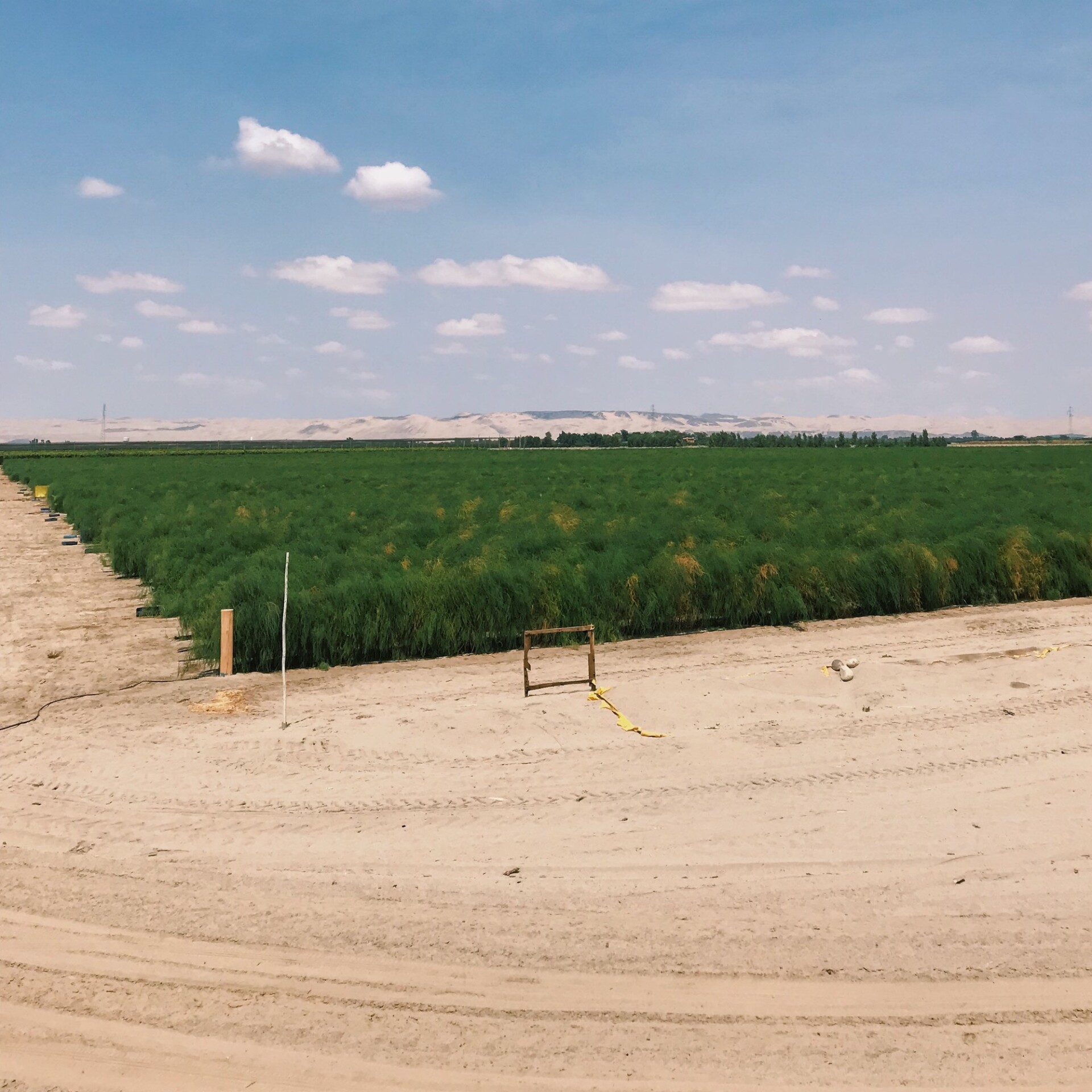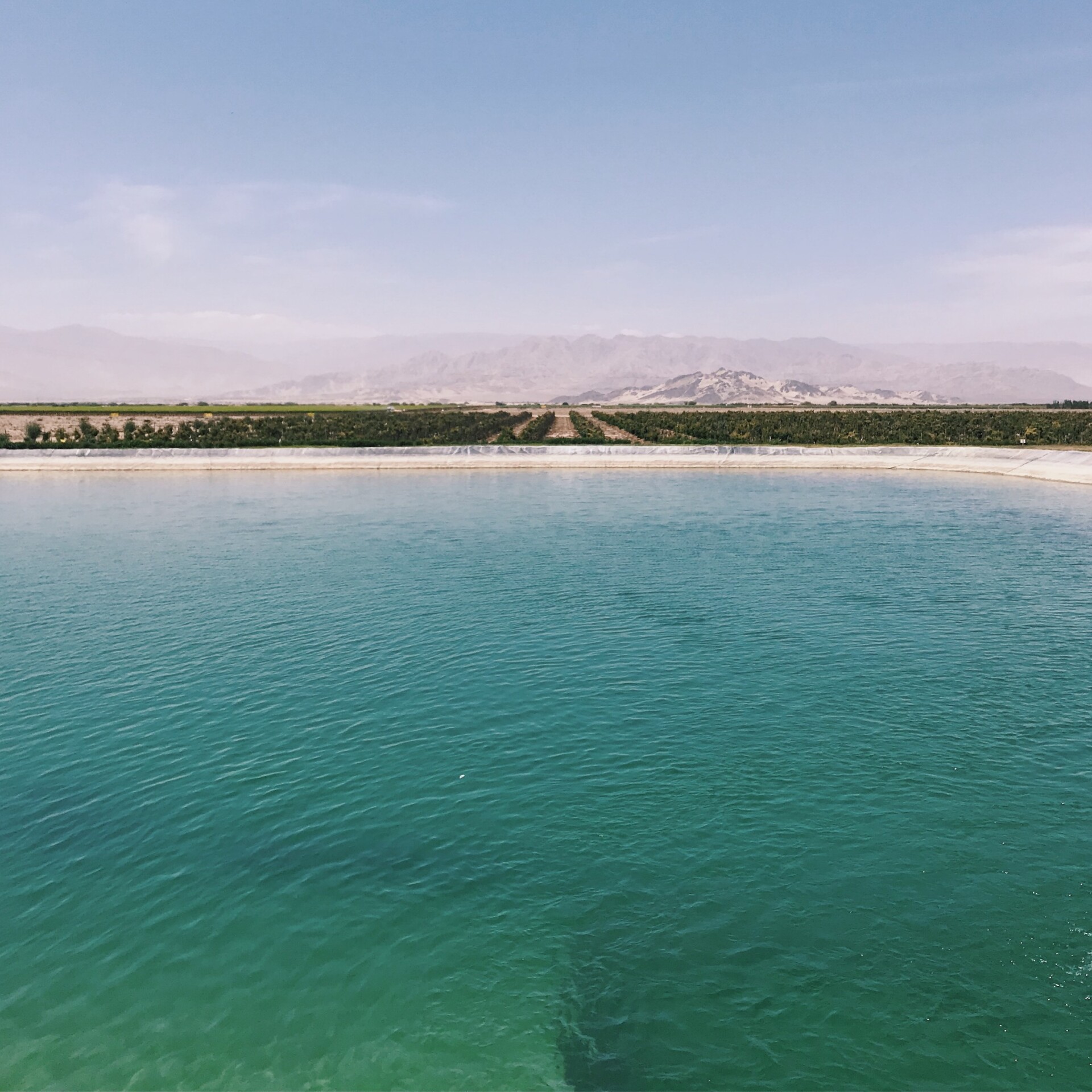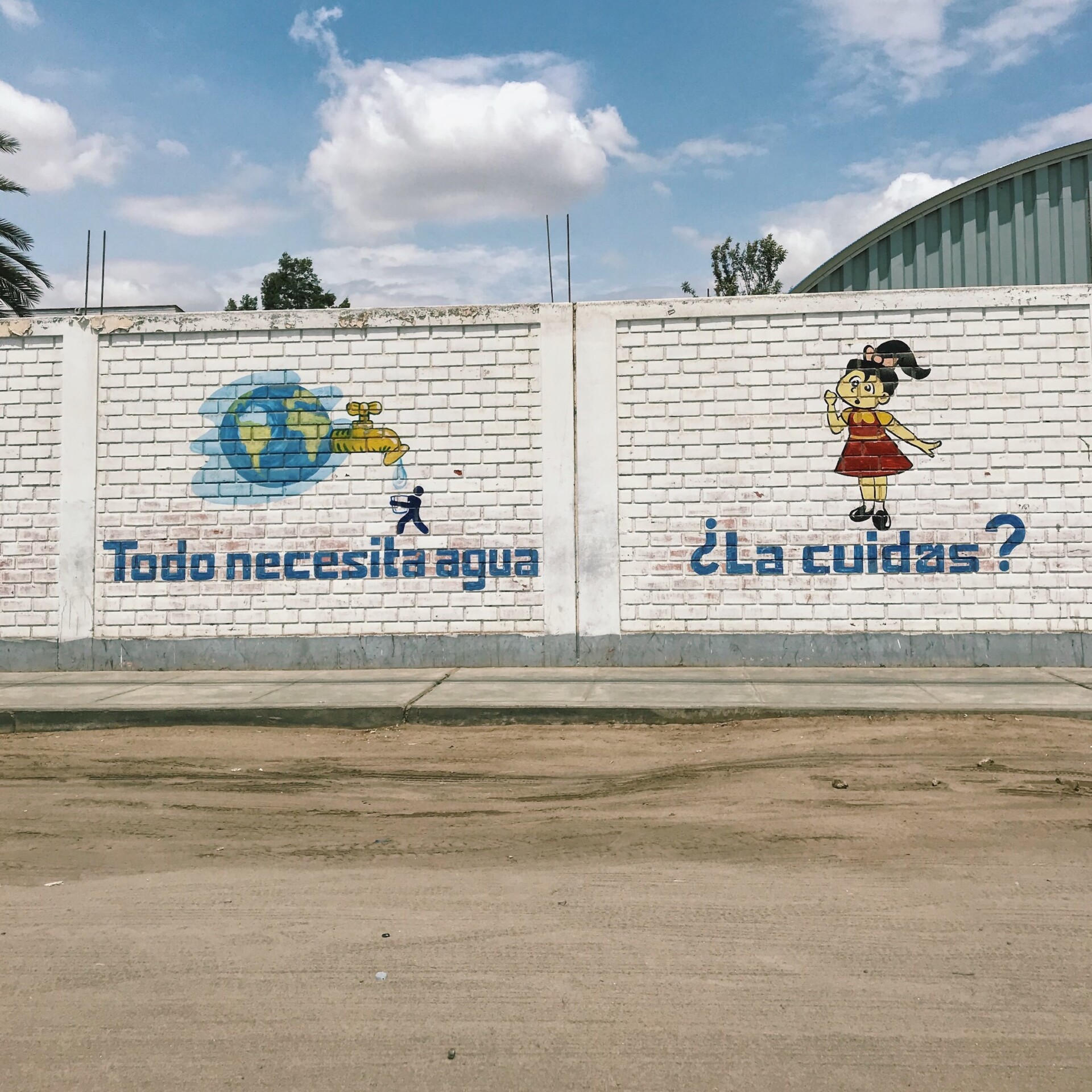
Testimonial
The Race to the Bottom of the Well; Mega-Farms vs Residents in Ica, Peru

Taken in the Fundo de Don Ernesto, a large export farm in Ica, Peru.
For the past 6 months I have had the pleasure of working with the NGO Horizonte Corporativo in Ica Peru, an inland city located in the Peruvian desert. My main job with Horizonte is to help develop small orchards in 5 schools located on the outskirts of the city. Horizonte is part of the large agriculture export business, Agrícola Chapi as their social responsibility team so my work also includes visits to their large mega-farm. Before arriving in Peru I had never visited a large scale farm before and I found myself amazed at the rows of asparagus, avocados and grapes as far as the eye can see. The striking contrast between lush farmland inside the plantations and the surrounding barren desert led me to question how these farms developed in such an arid region especially as the nearby schools we work in struggle to obtain enough water for their small gardens.

School Garden

Asparagus in a Mega-Farm
Prior to the 1990’s Peru was known for its mining industry, however, the government wanted to diversify the economy to help recover from the financial crisis that swept through Latin America in the 1980’s [1]. The government introduced neoliberal policies that would help to reduce the barriers and increase the benefits for the private sector to create new businesses. Large agriculture businesses sought to take advantage of the new neoliberal policies by using loans, largely from the World Bank Group and private investors to set up mega-farms predominantly in the Ica region [2]. Today the 6 largest Peruvian agricultural corporations (Agroindustrias AIB S.A, Agrokasa, Icatom, IQF, Beta, and Agrícola Chapi) are located in the Ica region and together they control more than 40% or 10,000 hectors of the cultivated land [3].
Since 2011, The agriculture export industry has grown annually at a 3.3% rate and makes up nearly 11% of Peru’s total annual GDP [1]. Furthermore, 1 in 5 Ica residents are currently employed by the agriculture sector, which has helped to increase income of the poor [4]. Other signs of economic prosperity can be seen throughout the region such as the new shopping mall, el Quinde which opened 5 years ago, advertisements for new housing developments and the opening of new restaurants throughout the city.
While the agricultural boom has benefited the local economy, it has also added strain on the already limited water source. Ica’s desert climate provides less than 25.5 mm of rainfall each year, meaning that the region relies on the underlaying aquifer as its primary source of water [4]. However, with a combination of climate change and mismanagement of water extraction from the new agriculture sector, water is being taken out of the aquifer at a faster rate than it can be naturally replenished [5]. In order to help prevent the overuse of the existing water the government has put in place regulations, however most are not enforced properly. For example, one of the regulations limits the number of wells allowed to be operate in a certain region, these wells need to be registered through the government to be legal. However, it is estimated by the Autoridad Nacional del Agua that 3 out of 4 (1,320 out of 1,760) wells are currently operating illegally without proper registration [5]. Moreover, these large agriculture companies have built their farms mainly on uncultivated land where there is little groundwater available which has caused these companies to buy up wells in the region from smaller farms and transport the water to their farms [3]. Mega-farms also appear to have little difficulty buying wells that the ANA banned from operating and obtaining permission to reopen them while residents are not given the same ease [6].

This large pool of water demonstrates how much water these mega-farms have access to.

‘Everyone Needs Water’ ‘Do you take care of it?’ Painted by the ANA on the walls of a town bordering a mega-farm. The message targets individuals, ignoring the use of large companies.
Better enforcement of existing regulations and the creation of new ones can help to decrease the amount of water depletion in the region as currently there is little to stop large companies, who already consume 78% of the groundwater from pumping as much water as they like from the aquifers. The conservation of water is especially important as the towns surrounding these large agricultural businesses also depend on the groundwater which in some cases only flows through the taps once every 10 days [1]. I have often noticed an indistinguishable buzz in the rural towns when water is flowing: many people are outside collecting buckets of water from taps, doing laundry outside their houses or watering small gardens in the normally quiet towns. With inconsistent access to water it is easy to see that these towns are likely to become defensive about protecting what little water they have from the nearby mega-farms. There has already been conflict between some of these towns and mega-farms such as the feud between Ocucaje and Agrícola La Venta, who in 2015 attempted to expand its pipelines by tapping into the town’s wells. Angered that this development would exploit the town’s water the residents of Ocucaje attempted to block the construction crew from installing the pipeline. As I looked into the current status of the feud I found that Ocucaje was still in conflict with La Venta as of 2018 as water has become less available to the community and more accessible to the mega-farm [6].
I have asked the people who grew up in the Ica region on their thoughts surrounding the increase of agricultural activity in the region. They have agreed that it brings jobs and better economic stability to the people employed in the mega-farms however, they recognize that the poor management of water from the mega-farms and lack of regulation from the government is depleting the groundwater and endangering their livelihoods. As it stands, the water demand in Ica is far greater than its supply, if changes aren’t made the region will struggle to maintain the current level of agriculture exports and enough water available for its citizens. Currently Peru’s interests have put economic prosperity first but will it be worth it they run out of water?
Credits and references
[1] Morris, Michael; Diaz Rios, Luz Berania; Sebastian, Ashwini Rekha; Vega, Griselle Felicita; Miranda Montero, Juan Jose; Valdés, Alberto; Frewer, Felix; Escudero, Dennis. 2017. Gaining momentum in Peruvian agriculture : opportunities to increase productivity and enhance competitiveness (English). Washington, D.C. : World Bank Group. http://documents.worldbank.org/curated/en/275111518463714554/Gaining-momentum-in-Peruvian-agriculture-opportunities-to-increase-productivity-and-enhance-competitiveness
[2] Schmall, E. (2010, September 24). Peru water wars threaten agricultural export boom. Retrieved from https://www.reuters.com/article/us-peru-water/peru-water-wars-threaten-agricultural-export-boom-idUSTRE68N4DN20100924
[3] Bayer, D. (2009, November 22). La crisis del agua en Ica y cómo resolverla. Retrieved from https://www.ecoportal.net/temas-especiales/agua/la_crisis_del_agua_en_ica_y_como_resolverla/
[4] Schwarz, J., & Mathijs, E. (2017). Globalization and the Sustainable Exploitation of Scarce Groundwater in Coastal Peru. Journal of Cleaner Production, 147, 231-241. doi:10.1016/j.jclepro.2017.01.067
[5] Autoridad Nacional del Agua. (2012). Plan de Gestión del acuífero del valle de Ica y pampas de Villacurí y Lanchas (Rep.). Peru.
[6] Torres, F., Díaz, C., Rosales, J., & Ciriaco, M. (2018, May 21). La empresa que absorbió al pueblo del pallar. Retrieved from https://ojo-publico.com/especi...
